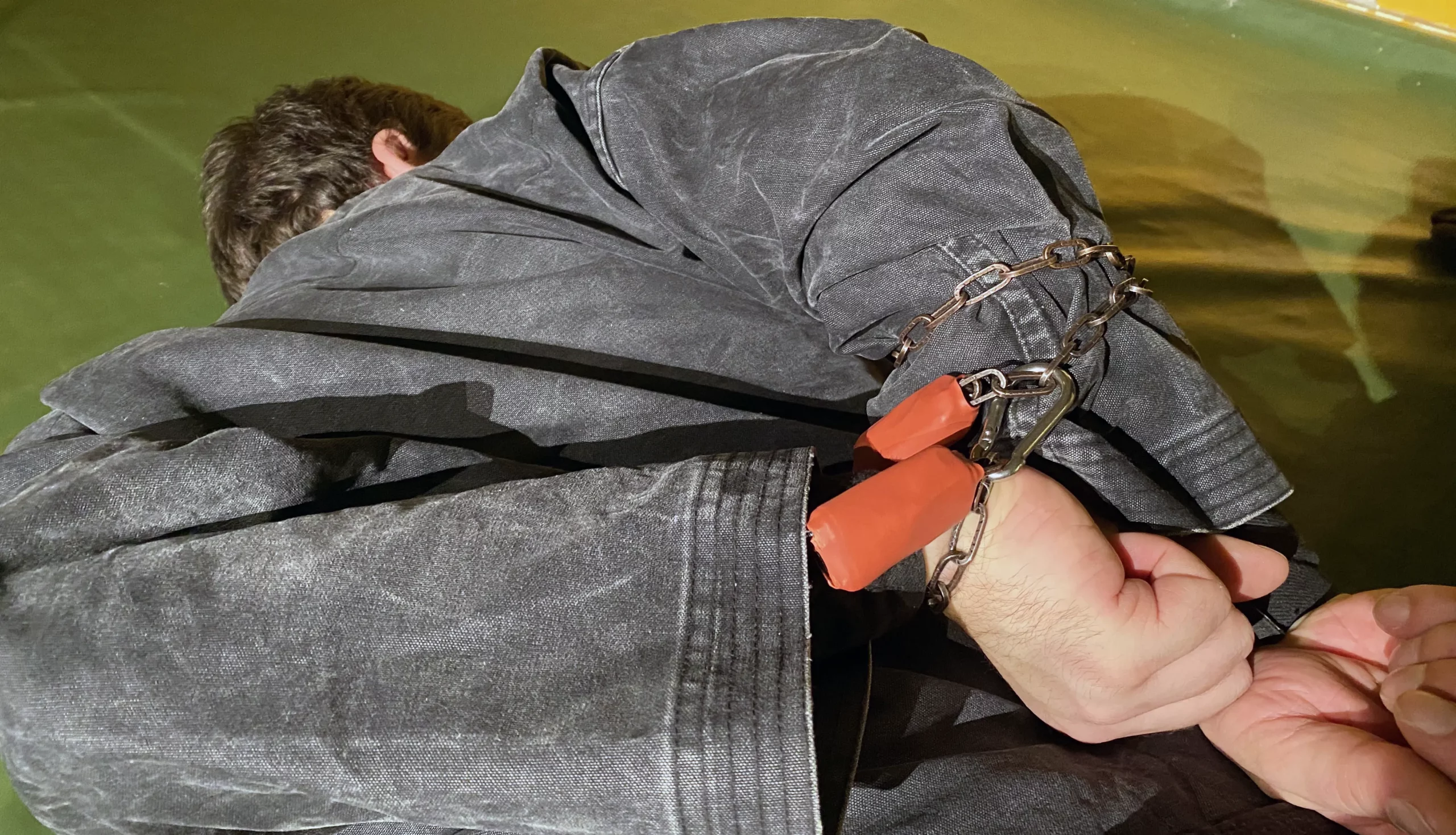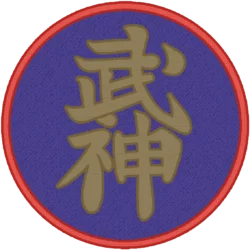Kusarifundō 鎖分銅 is the name I chose for this article. Other names are Manrikigusari, Ryōfundō, Sodegusari, Kusari, Tamagusari and Kusarijutte.
The 萬力鏈 Manrikigusari (chain with 10,000 powers) was developed about 350 years ago by Masaki Dannoshin Toshimitsu (正木 俊光, February 11, 1690 – May 22, 1776). He was a famous swordsman protecting the main gate of the Edo castle.
He thought it would be inappropriate to spill blood on such important and historical grounds. This is why he invented the Manrikigusari. From here on in the article I will call it Kusarifundō.
Weapons with chains was used long before this, but those weapons was more meant for war than self defence. The Kusarifundō is not meant to kill people. It was developed for officers and guards for arresting purposes without spilling blood, much like the Jutte.
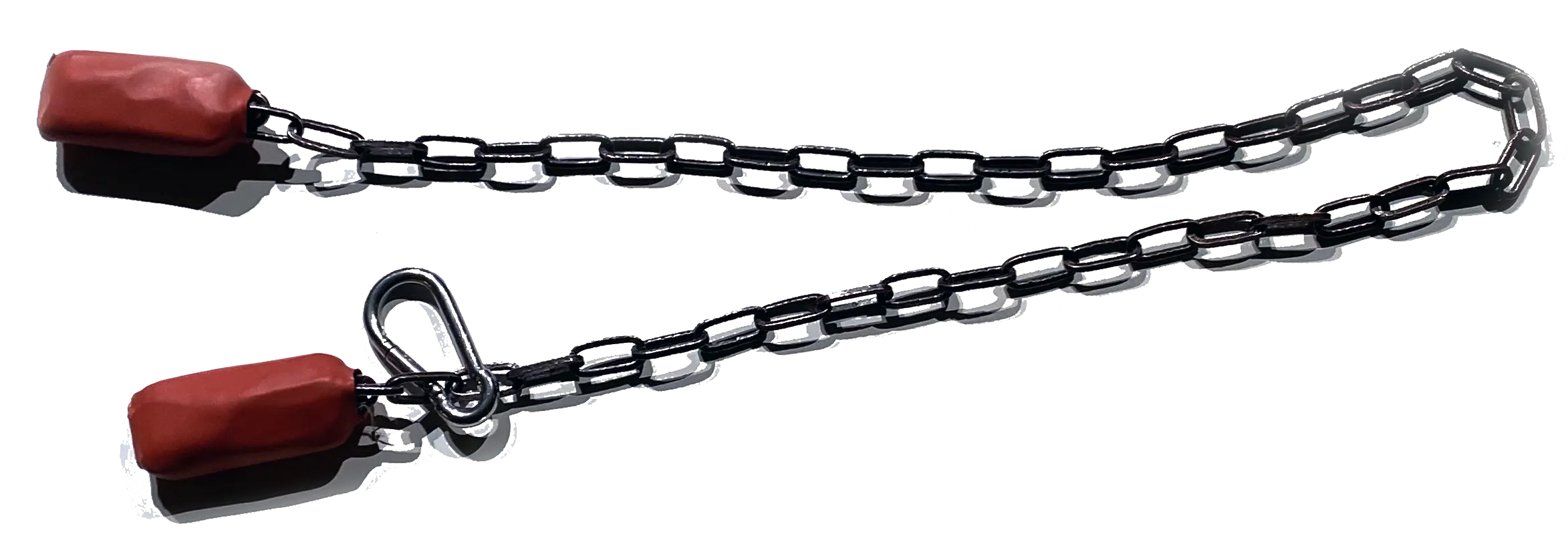
Characteristics of the Kusarifundō
The chain was 1-3 Shaku (foot), from 30 to 90 cm with iron weights. It had small iron weights attached at each end of the chain. Usually rectangular shaped around 2 inches long.
The average length of the chain was 2 Shaku, the weights could also have different forms like octagonal, hexagonal or even round.
The guards wore the chains tucked into their belts, and the weapon was treated with as much respect as their swords.
Advantages of the Kusarifundō
There is no disadvantage using the Kusarifundō in a small room or crowded space. Anyone with knowledge of Martial Arts can use the chain incorporated with their own techniques, thereby increasing the effectiveness in their own art.
When you use the Kusarifundō in self defence, the whole body and spirit must be included in the act for perfect effectiveness and success.
The Kusarifundō is to be thought of as a living thing and not a dead object. As a weapon it evolves with you and grows to be a part of your own body.
If you want to master the techniques of the Kusarifundō you must treat it with the highest respect. If you consider it a dead piece of metal you will never understand its fullest potential.
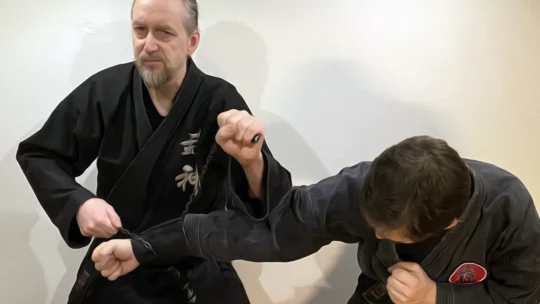
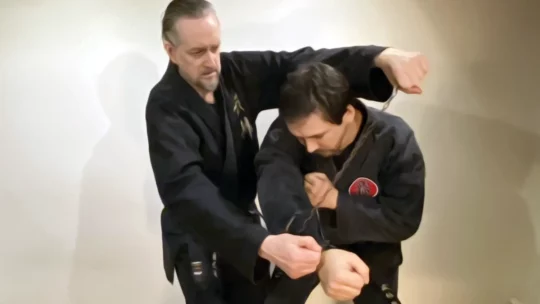
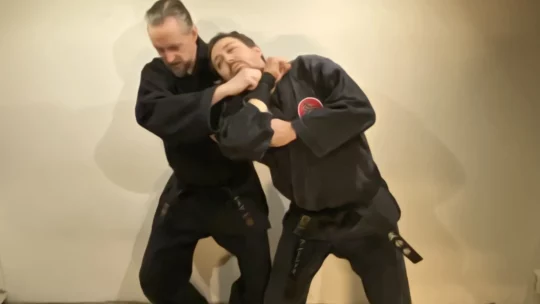
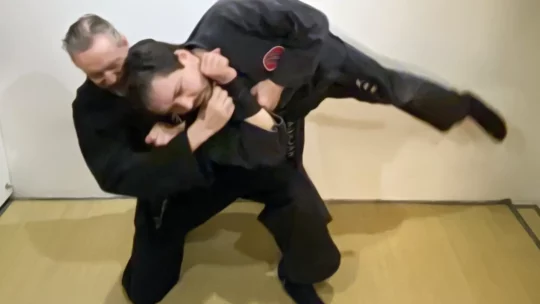
Practising with the Kusarifundō
To fully understand the Kusarifundō it should always be with you. You should handle it like a plaything so that you learn the weight, characteristics and feeling of the weapon.
The true secret of learning to use the Kusarifundō effectively is the speed of the weapon. You must use it very fast to confuse the opponents ability to distinguish it as a weapon.
Slow and sloppy manipulation of the Kusarifundō can result in the opponent figure out the weapons characteristics and he can unarm and defeat you.
Hide the Kusarifundo in different Kamae, and strike him with lightning speed and then hide it again.
To master the use of the Kusarifundō, these words explain the SECRETS:
S peed
E fficiency
C onsealment
R esourcefulness
E nergy
T iming
S urprise
Kusarifundō Te no uchi
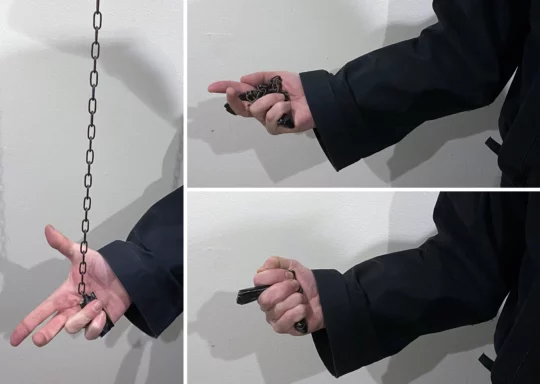
The grip of the Kusarifundō is more or less the same way we hold other weapons. Start holding one weight with the right hand (chain is above the thumb). Make sure the end stick out from the hand about one cm so that you can use it in strikes.
The little finger and the ring finger hold it firmly. Use the middle finger to make a small cup, drop the chain down into the “cup”. Put the weight between the middle finger and index finger so it protrude. This weight is also used for striking purposes.
Practice releasing either weight with the chain fully extended. If you release the bottom weight and hold it between the middle finger and index finger, this is a weak grip. So you need to practise to change the grip fluidly and quickly to the proper grip.
Gohō no Kamae
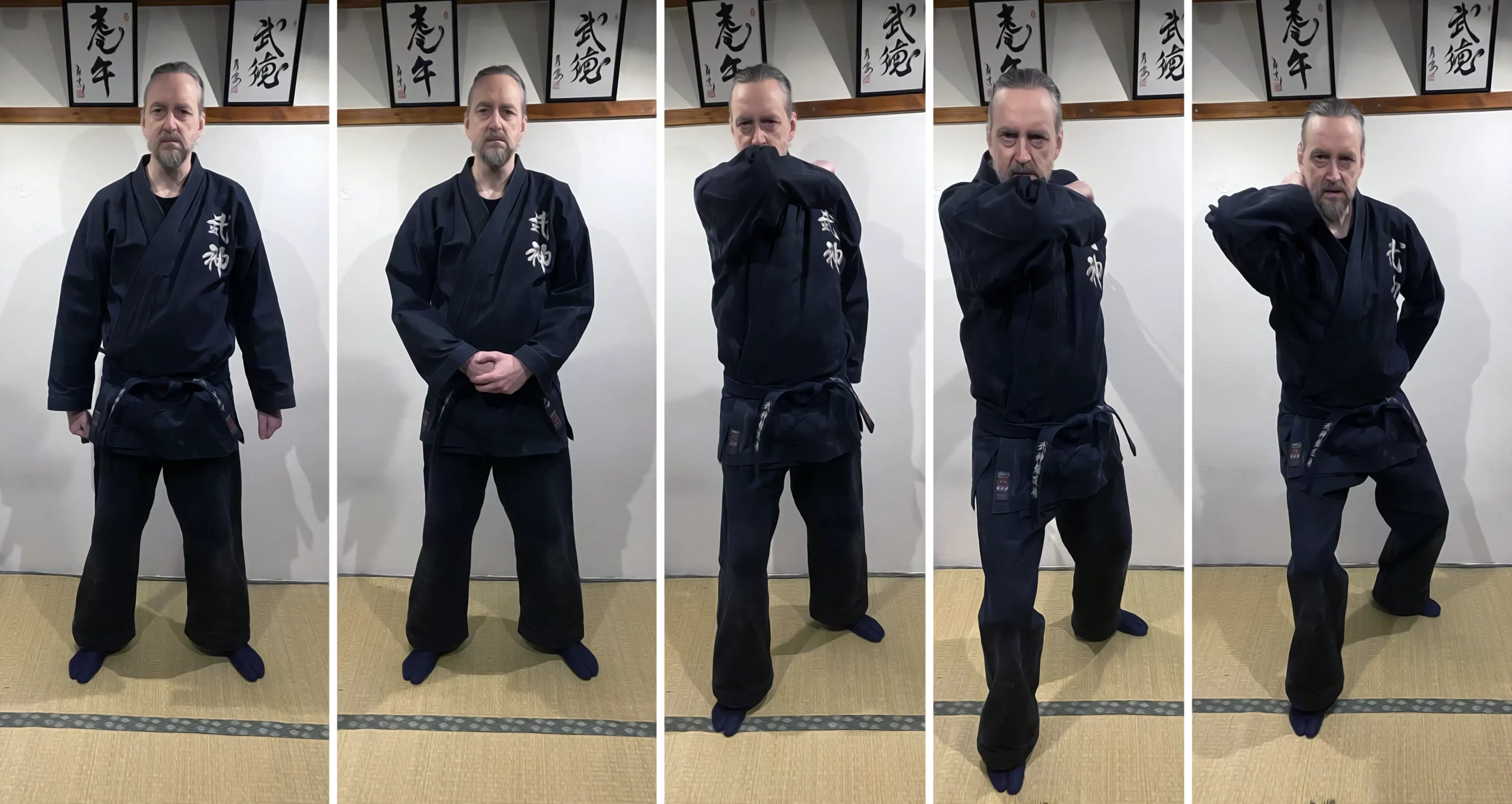
- 自然の構 Shizen no Kamae (Issei in Masaki-ryu). Hold the weapon in the right hand naturally down the side. If the chain is out, hide it behind the leg.
- 平の構 Hira no Kamae (Goho in Masaki-ryu). Hold the weapon in the right hand over the belly. Cover the weapon with the left hand and don’t look hostile and stiff.
- 天地の構 Tenchi no Kamae. Hold the weights with both hands. Aim the right elbow forward with the right hand under the left armpit. Hold the left hand straight down behind the hip. The chain is taut between the hands against the body.
- 六方九字の構 Roppokuji no Kamae (Shumoku in Masaki-ryu). As above but the left hand is held straight back. The chain is taut and held against the arm.
- 影の構 Kage no Kamae (Ippu in Masaki-ryu). Hold the weights with both hands. The right hand over the shoulder behind the right ear. The left hand is held behind the left hip. The chain is taut between the hands diagonally across the back.
Each Kamae has many variations, ten-chi-jin levels, weight distribution, hanmi for example. But the Kamae can also change with your intention.
Kusarifundō Iai
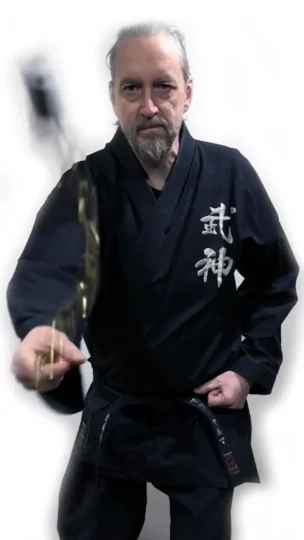
- Kasumi (Metsubushi). Hold the Kusarifundō in the right hand. Extend quickly the right hand toward the opponents and release the top weight and chain to his face. With the right hand pull the chain back quickly and hide the chain in a Kamae. Zanshin.
- Kakoiuchi (Happōfuri). From Tenchi no Kamae, right elbow pointing forward. Release the left hand grip and strike down diagonally to his face. Immediately follow up with another diagonally strike down to the left and catch the chain with the left hand to Kamae. Zanshin.
- Sukuiuchi. Instead of hitting the opponent from above, you hit him from under. Swing the chain as previously but upwards (the other direction).
Kusarifundō Uchi to Kyusho
I’m not gonna go into detail explaining exact points here, there are many. If you are swinging and hitting big muscle groups it might just be like a sting. But if you hold the Fundō in the hand and strike the same point, you have more weight behind the strike and it will be more effective.
Obviously the whole face and head is effective target. But hitting someone’s head will give you a harsh punishment from the legal system if you’re caught (even if it was self defence). A hard hit to the head can cause serious damage and even be deadly.
Other good areas is the bones around the joints. Shoulder, elbow, the whole hand, hip bones, knee and the whole foot.
Gyokkō-ryū
All the weapons in Bujinkan Dojo is practised with the ideas from Gyokkō-ryū Sanshin no Kata, Ki Kata and Toride Kata. Play around with these techniques and explore where and how to use the weapon to enforce the techniques.
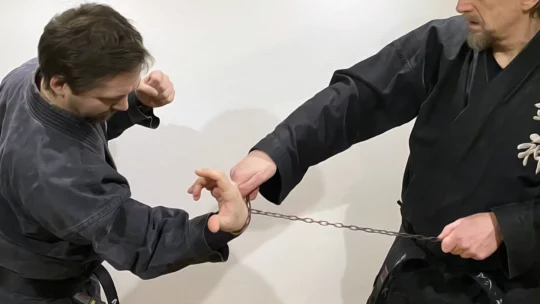
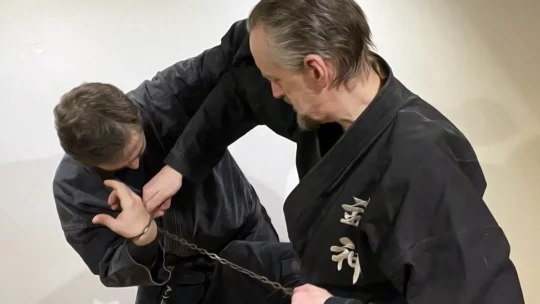
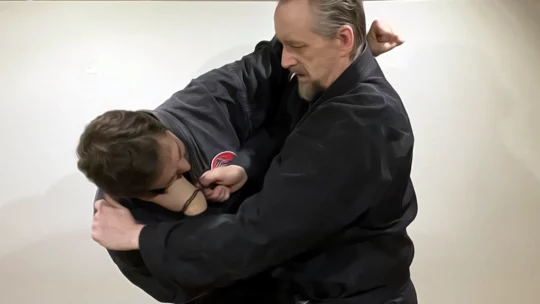
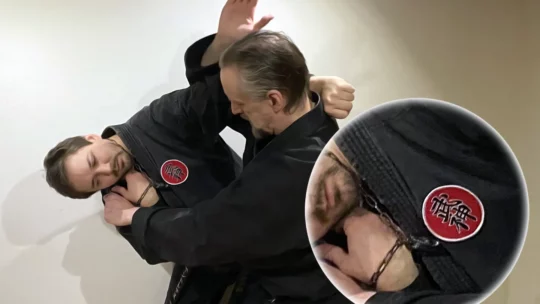
Kukishin-ryū
Kusarifundō was practically invented long after Kukishin-ryū, there was no need for such a weapon on the battle fields when Kukishin-ryū was developed.
But in the Bujinkan Dōjo we can use the Kusarifundō borrowing techniques from similar weapons like the Tessen, Jutte, Hanbo and other weapons in Kukishin-ryū.
Kusarifundō in Ninjutsu
The Ninjutsu schools in Bujinkan Dojo have many weapons and tools with a chain and weight. The concept of using a Kusarifundō is not new to these schools.
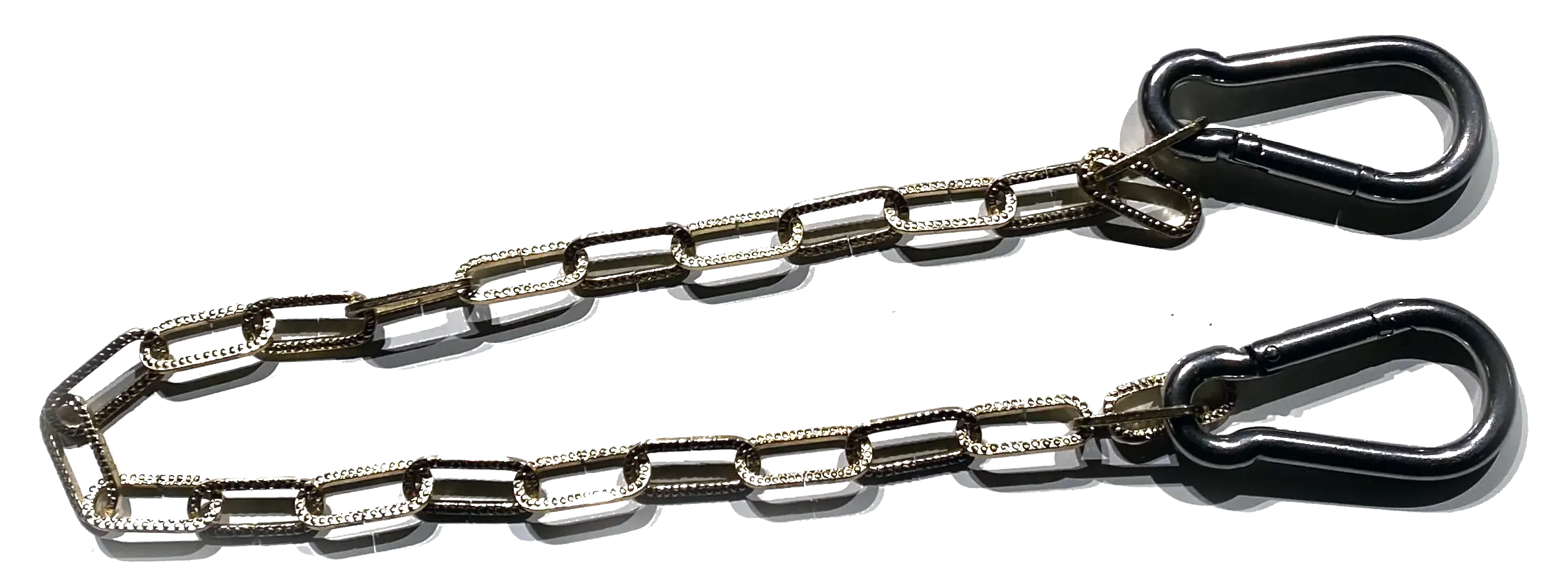
Kusarifundō in practical use today
I would not advise anyone to walk around with a real chain weapon. Carrying something that obviously has no other purpose than being a weapon can get you in legal problems in most countries.
You can use the belt in emergency situation (be careful you don’t drop your pants). You can also use a towel, it works better if it is wet. Or the dogs leach can be used (no, don’t do that, bad idea!).
When we practice in the Dōjō with a partner we use cotton ropes and soft weights. Even these can be used very effectively. So be careful when you are training.
